
How to Identify and Address Customer Pain Points
In the dynamic landscape of the business world, understanding and mitigating customer pain points are pivotal to achieving customer satisfaction and fostering loyalty.
Regardless of the nature of your business, customers are bound to encounter hurdles that dampen their experience with your brand. These hurdles, often called 'pain points', can range from complex user interfaces to unsatisfactory customer service. Identifying and addressing these pain points enhances the customer experience and strengthens the bond between customers and your brand.
This blog delves deep into the systematic approach to pinpointing and effectively addressing these pain points, paving the way for a prosperous business-customer relationship.
What are Customer Pain Points?
Customer pain points refer to specific problems, frustrations, or challenges that customers experience when interacting with a product, service, or brand. These pain points can occur at various customer journey stages and encompass many issues.
Understanding customer pain points is essential for any business to build strong customer relationships and promote a customer-centric culture. By identifying these pain points, companies can develop targeted strategies to address them, ultimately improving the overall customer experience and fostering loyalty and satisfaction.
What are the Types of Customer Pain Points?
Here are different types of customer pain points:
1. Productivity Pain Points: These involve issues directly related to the product, such as:
- Functionality: Problems with the functionality or features of a product.
- Usability: Difficult product use due to complex interfaces or poor design.
- Quality: Issues with the quality or durability of a product.
- Compatibility: The product is incompatible with other tools or systems a customer uses.

2. Support Pain Points: These refer to problems encountered when interacting with the service aspects of a business, including:
- Customer Service: Poor customer service experiences, including slow response times and unhelpful representatives.
- Accessibility: Challenges in accessing services, such as website downtime or physical location inconveniences.
- Knowledge: Insufficient information or guidance on how to use a product or service effectively.
3. Financial Pain Points: These involve concerns about the price or cost of a product or service, such as:
- Perceived Value: Customers feel that the price is too high for the value provided.
- Hidden Costs: Encountering unexpected costs or fees not communicated upfront.
- Affordability: The product or service being out of reach for customers due to high prices.
4. Process Pain Points: These encompass difficulties experienced during various processes related to a business, such as:
- Purchasing Process: Complicated or lengthy purchasing processes that create frustration.
- Delivery and Shipping: Issues with delivery times, shipping costs, or handling goods.
- Returns and Refunds: Complicated processes for returning products or obtaining refunds.
How to Identify Customer Pain Points?
Identifying customer pain points is critical in fine-tuning your business strategies and offerings. Identifying customer pain points is an ongoing process that involves vigilant monitoring, analysis, and direct communication with customers.
By proactively identifying these pain points, businesses can enhance their offerings, improve customer satisfaction, and build a loyal customer base. Identifying customer pain points will transform pain points into opportunities for innovation and growth, creating a win-win situation for your business and customers.
Here's how you can effectively identify customer pain points and issues:
1. Listen To Your Customers
Engaging and listening directly with customers is a potent way to uncover their pain points. This can be achieved through customer surveys that seek explicit information about their experiences and areas they find lacking. Use a combination of multiple-choice and open-ended customer feedback questions for comprehensive feedback.
Feedback Portals are a centralized place for product feedback to keep track of different types of customer feedback and improve SaaS products while listening to their customers. This is possible with Rapidr.
Rapidr helps SaaS companies be more customer-centric by consolidating feedback across different apps, prioritizing requests, having a discourse with customers, and closing the feedback loop.
Feedback forms on websites or apps can be a constant channel for customers to voice their concerns when integrated directly with feedback management systems. Additionally, arranging customer interviews or focus groups allows for a more detailed and nuanced understanding of customer grievances and issues.
You can also use in-app feedback platforms to ask users about their real-time experiences. This can be done through chatbots or pop-up messages, prompting immediate feedback while the user is engaged with the product. Rapidr's deep Intercom Integration makes it easy for your product and customer success teams to track incoming feedback on Intercom.

2. Gather Input from Sales and Customer Support Teams
Scrutinizing data from customer support interactions can help identify recurring issues causing dissatisfaction. Moreover, examining sales data can help discern patterns or trends indicating underlying customer pain points. They can provide insight into your product roadmap, new feature ideas, and customers' overall experience.
3. Apply Social Listening & Collect Online Reviews
Social media platforms and online review sites are rich sources of customer feedback. Monitoring discussions, comments, and reviews on these platforms can provide insights into common customer complaints and concerns. Monitor your company's social media profiles and any online community feedback forums where your product might be discussed.
It helps in understanding the sentiments and issues that customers frequently encounter. Analyzing reviews on platforms such as G2, Capterra, and GetApp can offer a deeper understanding of the prevalent pain points in the customer base.
4. Collect Internal Feedback & Insights From Teams
Employees, especially those in customer-facing roles, can offer valuable insights into customer pain points. Gathering their feedback and fostering cross-departmental collaboration can provide a multifaceted view of potential customer issues.
Different departments within an organization can have varied perspectives on customer pain points, making internal insights vital in identifying these issues. Customer success, marketing, and sales teams bridge the customer and the organization, providing valuable insights to define product strategy.
Your customer support team often interacts directly with customers, hearing their pain points and praises first-hand. Ensure an internal team feedback system is set up for this valuable information to be collected from customer-facing teams and shared with the product team.
5. Perform Qualitative Market Research & Competitor Analysis
Understanding the broader market trends and analyzing competitor reviews can help identify industry-wide pain points and influence product research.
Market research can offer insights into areas where customers generally face challenges, and studying competitor reviews can reveal gaps in the industry offerings. These insights can be leveraged to address pain points specific to your business and prevalent in the industry.
6. Evaluate Insights from Usability and Beta Testing
Conducting usability tests on products or websites can unveil areas where customers struggle or face difficulties.
Beta testing for new products or features allows for gathering early feedback and identifying potential pain points before a full-scale launch. These testing phases are crucial in preemptively identifying and addressing issues that could become significant pain points post-launch.
Common Customer Pain Points Every Business Faces
1. Unresponsive & Unreachable Support Team
Customers often get frustrated with delayed responses, unhelpful support, or impersonalized service. Businesses need to prioritize responsive and empathetic customer service. Customers often face long wait times or no response when contacting the support team, leading to dissatisfaction and frustration.
The average response time for a customer service request is 12 hours and 10 minutes as found out by SuperOffice
Solution: Implement a ticketing system to manage customer queries efficiently and establish clear SLAs to ensure prompt responses. Consider setting up automated responses to acknowledge receipt of customer queries and provide an estimated resolution time. Listening actively and showing empathy are great ways to drive product adoption with customer feedback.
2. Poor Quality of Products & Services
When products or services do not meet the expected standards, it leads to customer dissatisfaction and possibly negative reviews and feedback.
Solution: Focus on quality control measures to ensure products and services meet the expected standards. Regularly collect customer feedback to identify areas for improvement and make necessary adjustments based on the feedback. Rapidr provides a bug-tracking tool that allows you to capture, record, manage, and resolve bugs and issues from users in one central location.
3. Pricing Issues & Complicated Buying Process
Unclear pricing structures, hidden costs, and a confusing, user-friendly buying process can deter customers. It's imperative for businesses to maintain transparency and clarity in pricing to build trust with customers.
A Forrester study shows that 63% of B2B purchases involve more than four people, and B2B buyers often have more than 20 interactions with a brand before purchasing
Solution: Streamline the buying process to make it more straightforward and transparent. Communicate pricing structures and avoid hidden costs to maintain customer trust and satisfaction. Rapidr’s idea management software makes tracking ideas and feedback around pricing from your customers easy.
4. Complex User Interface & Inconsistent Customer Experience
A user interface that is complex and not user-friendly can deter customers. Businesses should strive to create intuitive, easy-to-navigate platforms that enhance the user experience.
88% of buyers say experience matters as much as a company's products or services. - Salesforce
Solution: Design user interfaces with the customer in mind, focusing on simplicity and usability. Conduct usability testing with real users to identify and rectify areas of confusion or complexity.
5. Lack of Adequate Knowledge & Personalization
Customers expect personalized experiences. Incorporating personalization in service delivery can enhance customer engagement and satisfaction. Customers appreciate the ability to tailor products or services to their specific needs. Offering customization options can significantly increase customer retention.
Customers are 2.4 times more likely to stick with a brand when their problems are solved quickly, as quoted by Zendesk.
Solution: Train support representatives to have deep product knowledge and equip them with the tools to offer personalized assistance. Implement systems allowing personalized communication and offers based on customer preferences and buying history.
6. Rude Behavior of Support Representatives
Rude behavior from support representatives can leave a negative impression on customers and damage the business's reputation.
In fact, Customer Retention Behavior Statistics show that customers who have had their complaints resolved have a retention rate of 54%.
Solution: Provide regular training to support representatives on soft skills and customer service etiquette. Implement a strict code of conduct and consider setting up a feedback system to monitor and manage the behavior of support representatives.
7. Inadequate Communication & Updates
Customers value clear and consistent communication from businesses. Poor communication can lead to misunderstandings and a lack of trust between the business and its customers. Effective communication strategies, such as publishing updates and new features with a changelog, can prevent misunderstandings and foster good relationships.
Solution: Develop clear communication guidelines and ensure all communications with customers are clear, concise, and transparent. Implement tools that facilitate smooth communication across various channels to close the feedback loop.

8. Steep Learning Curve
When products or services have a steep learning curve, customers may find it difficult to utilize them, leading to dissatisfaction.
Solution: Offer comprehensive training materials, including guides, knowledge base, tutorials, and webinars, to help customers get acquainted with the product or service. Consider implementing a customer onboarding program to guide new customers through the step-by-step learning process.
Best Practices to Address and Solve Customer Pain Points
Addressing customer pain points effectively enhances customer satisfaction and fosters loyalty. Here are some best practices businesses can adopt to solve customer pain points:
Understand Customer Needs
A deep understanding of your customer's needs, preferences, and behaviors is essential to tailor your services or products to your clientele. This understanding can be fostered through various means, such as market research, analyzing customer data, and directly engaging with customers to gather feedback.
According to a Microsoft Report, 77% of customers have a more favorable view of brands that ask for and accept customer feedback.
Understanding customer needs is not a one-time activity but a continuous process that evolves with market trends and consumer preferences.
Establish a feedback culture, maintain a centralized feedback page with Rapidr, encourage customers and teammates to provide feedback, and create a company-wide feedback culture. Regularly gather customer feedback through feedback surveys, centralized feedback portals, user interviews, and in-app feedback widgets.

Enhance Product Quality
Enhancing product quality involves relentlessly refining products to meet and exceed customer expectations. This can encompass improving the product's features, functionality, and reliability.
To enhance product quality, businesses should foster a culture of continuous improvement. This entails regularly reviewing product performance, gathering customer feedback, and implementing improvements based on this feedback.
Moreover, adopting quality control measures and standards can help maintain consistency in product quality, thus building customer trust and satisfaction.
Analyze User Feedback Data
Analyzing user feedback involves systematically collecting and analyzing it to glean insights into their experiences, preferences, and pain points.
Analyzing user feedback data can provide valuable insights that drive product development and improvement. Businesses need mechanisms to collect feedback through various channels, such as online reviews, surveys, and community feedback forums. Once collected, data analytics and product research tools can be used to analyze this feedback to identify patterns, trends, and areas for improvement.
- Start by revisiting the collected feedback and research insights. Organize them systematically, focusing on the key findings that align with your product's vision and goals.
- Perform ideation to seek the most effective solution. All feedback is valuable, but not all feedback needs immediate action. Classify insights based on urgency, feasibility, and alignment with business goals.
- For qualitative data, identify patterns, themes, and notable quotes.
- Use user segments and statistical methods to interpret results and find correlations and conclusions for quantitative data.
Streamlining Processes
Streamlining processes is pivotal in reducing customer friction and enhancing satisfaction. This could involve simplifying the purchasing process, making information readily available, or reducing response times in customer service. Businesses should continuously review and refine their processes to ensure a smooth and pleasant customer journey.
Streamlining processes helps make business operations more efficient, seamless, and customer-friendly, enhancing the overall customer experience.
Improve Customer Service
Improving customer service involves training teams to provide prompt, knowledgeable, and friendly assistance.
According to a survey, 76% of customers expect to get a reply within 24 hours on social media.
Utilizing technology to offer multichannel support and implementing policies prioritizing customer satisfaction can significantly enhance the customer service experience. It's about creating a culture that values customer satisfaction above all. It helps enhance the quality and efficiency of customer service to meet and exceed customer expectations.
Offer Effective Solutions
Offering effective solutions requires a deep understanding of customer pain points and the underlying causes of these issues. Businesses should adopt a proactive approach to identifying and solving customer problems before they escalate.
This practice focuses on proactively identifying customer pain points and developing solutions that effectively address these issues. This involves collaborating with different departments and sometimes involving customers in the solution development process to ensure their concerns are adequately addressed.

Maintain Proactive Communication
Maintaining proactive communication helps in building a strong relationship with customers. Businesses should establish clear communication channels and utilize tools like newsletters, social media, and blogs to keep customers informed about the latest developments.
Inform customers by updating the status of their feedback requests. Keep them in the loop about which requests are in progress or planned and which are done with a public roadmap offered by Rapidr.
In conclusion, feedback management is not a one-off process. Regular and transparent communication informs customers about developments, updates, and improvements. Moreover, businesses should be open to receiving and acting on customer feedback, fostering a two-way communication channel that encourages customer engagement and loyalty.

Conclusion
As we navigate through the intricate process of identifying and addressing customer pain points, it becomes evident that this endeavor is more than just a strategy—it's an ongoing commitment to excellence and customer satisfaction.
By fostering a culture that values customer feedback and is agile enough to adapt to changing needs, businesses can sculpt a brand experience that is both delightful and rewarding. Remember, a clientele that feels heard, valued, and respected is at the heart of every successful business.
Identify and address customer pain points by incorporating customer feedback in product development with Rapidr.
1. Centralized and organized by category: The first step in solving this is to organize customer pain points received as feedback in a central location. You’ll likely receive feedback from various channels and integrations like emails, Slack channels, support inboxes, forms, and in-app widgets.
2. Easily accessible to everyone: Centralizing all feedback data in one place, which can be easily accessed, will ensure that critical feedback doesn’t get lost and will allow you to understand what to prioritize.
3. Shared across internal teams: A central hub lets customer-facing teams access and submit feedback easily. A dedicated system will also help plan regular meetups with teams to discuss customer feedback and determine how to use it to define product strategy.
4. Prioritize and analyze feedback: Prioritize features and rank feature requests and tasks based on impact to make feedback-driven decisions. Remember, it's not just about collecting feedback. The real power lies in analyzing this qualitative data and implementing actionable changes that genuinely reflect your customers' desires and pain points. This ongoing listening, learning, and improving cycle sets successful companies apart.
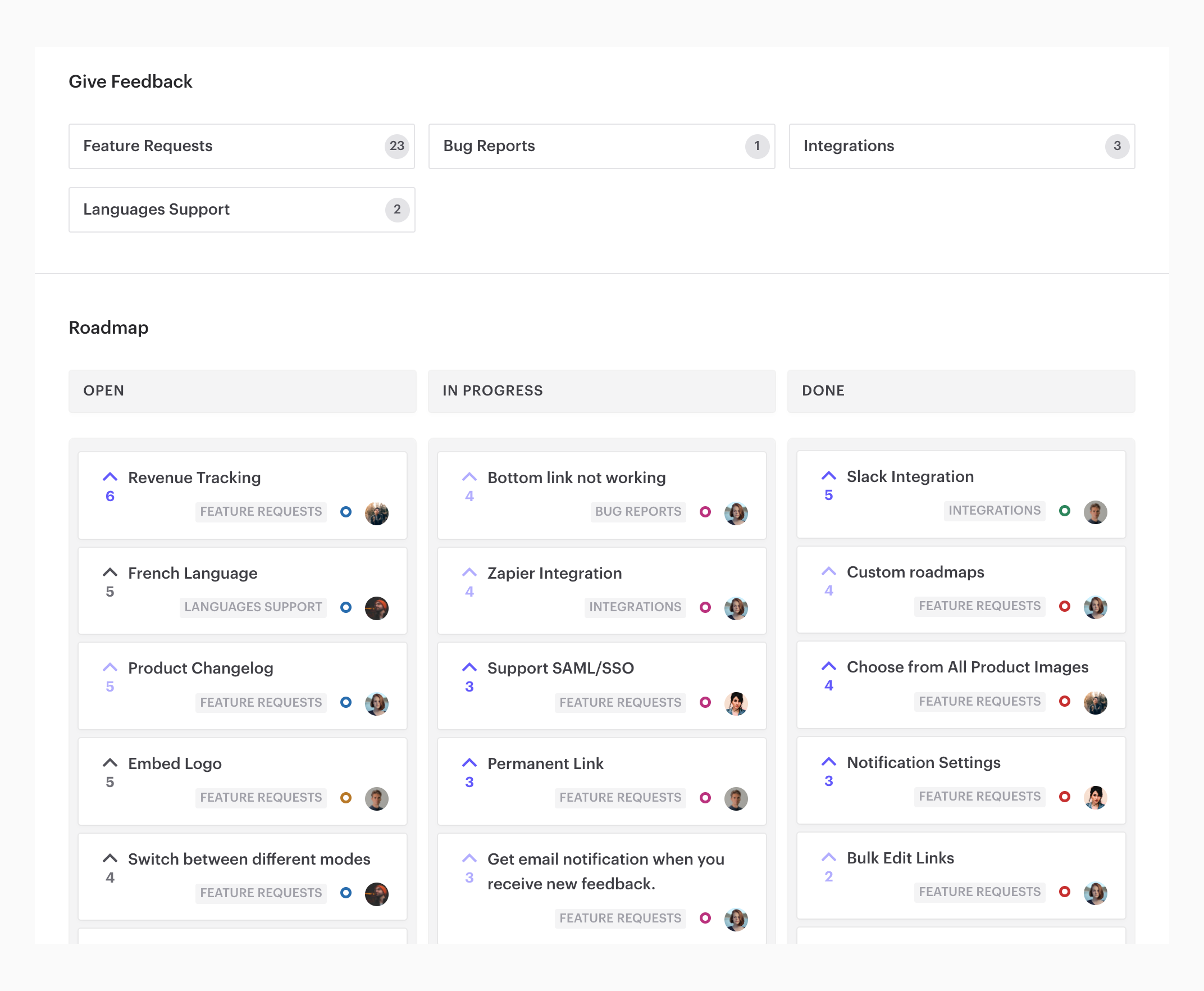
With Rapidr, you can collect, analyze, and organize feedback and engage with customers as their feedback moves through the development process. Sign up and set up a complete customer feedback system to find and solve your customer pain points.

